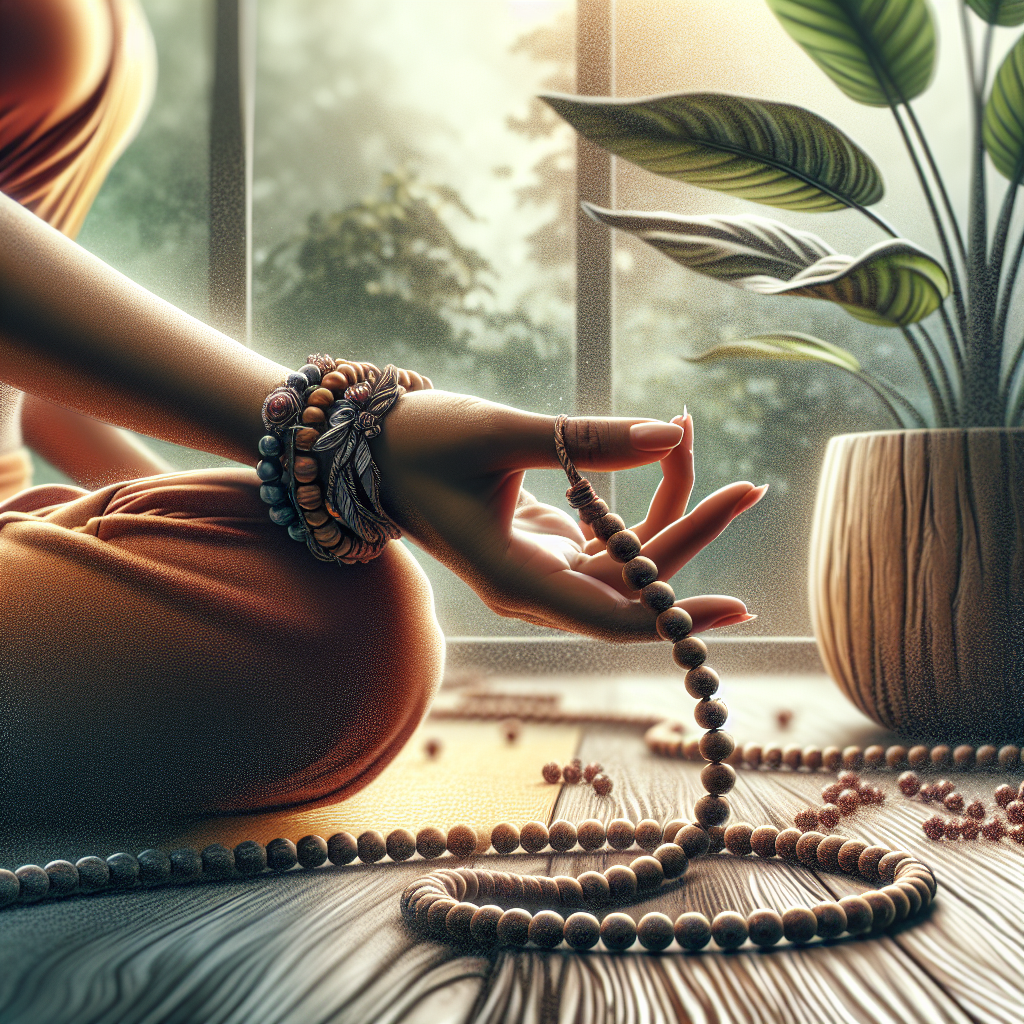
How to use a mala in meditation
The Art of Using a Mala in Meditation
Meditation is more than just finding a quiet space and sitting in silence; it’s about creating an environment where your mind can settle and your spirit can flourish. One tool that has been used for centuries to enhance meditation practices is the mala. In this article, we will explore the rich history of malas, how they are constructed, the significance of the beads, and ultimately, how you can effectively incorporate a mala into your meditation sessions.
What is a Mala?
A mala is a string of beads traditionally used in prayer and meditation, particularly in Hinduism and Buddhism. Often made from natural materials such as wood, seeds, or gemstones, a mala typically consists of 108 beads, plus one additional bead known as the guru bead. This additional bead is significant as it marks the beginning and end of a cycle of chanting or prayer, helping practitioners keep track of their repetitions.
The Significance of the Number 108
The number 108 is considered sacred in various spiritual traditions. Here are a few reasons why this number is significant:
- Astrological Significance: The distance between the Earth and the Sun is about 108 times the diameter of the Sun.
- Vedic Texts: There are 108 Upanishads, which are ancient texts that explore meditation, philosophy, and spirituality.
- Cultural Interpretations: Some believe that there are 108 energy lines, or nadis, that converge at the heart chakra.
Choosing the Right Mala
When selecting a mala, it's essential to consider materials, colors, and your personal connection to the beads. Whether you opt for traditional wood, crystal, or something more unique, each type of mala has its own properties and significance.
Types of Malas
Here are some common types of malas you may consider:
- Sandalwood: Known for its calming scent, sandalwood is traditionally used in meditation practices.
- Rudraksha: These sacred seeds are known for their grounding energy and are often used for meditation and prayer.
- Gemstones: Different gemstones resonate with different energies; for example, amethyst is believed to promote tranquility, while rose quartz encourages compassion.
How to Use a Mala in Meditation
In the following sections, we will provide a step-by-step guide on effectively utilizing a mala during your meditation practice. While there are various methods, this guide presents a foundational approach that can be adapted to fit your personal style.
Step-by-Step Guide
- Find a Quiet Space: Choose a calming environment free from distractions where you can sit comfortably.
- Hold the Mala: Grasp the mala with your dominant hand, allowing it to drape over your middle finger (the finger of wisdom). Your thumb will be used to count each bead.
- Set Your Intention: Take a moment to close your eyes and focus. What do you want to achieve from this meditation? Set a clear intention or affirmation.
- Begin Your Practice: Start by saying a mantra or focusing on your breath. As you do so, move your thumb to the first bead and gently pull it towards you.
- Count Each Bead: With each repetition of your mantra or breath, move to the next bead. This helps you maintain focus and track your repetitions.
- Completion: When you reach the guru bead, you can choose to stop or reverse directions and continue until you feel ready to conclude your meditation.
Tips for Effective Meditation with a Mala
To deepen your meditation experience, consider the following tips:
- Consistency: Try to meditate with your mala regularly, establishing a routine to strengthen your practice.
- Breathe Deeply: Allow your mind to settle by focusing on deep, intentional breaths throughout your meditation.
- Mindfulness: Stay present in the moment. If your thoughts wander, gently guide them back to your mantra or the feeling of the mala beads in your hand.
Integrating Malas into Your Spiritual Practice
While malas are traditionally used for meditation, their uses extend beyond this practice. Here are some additional ways to integrate malas into your spiritual routine:
Using Malas in Daily Life
- Mindfulness Practice: Carry your mala with you as a reminder to pause and breathe regularly throughout your day.
- Affirmations: Use your mala to repeat positive affirmations as you move through your daily tasks.
- Gratitude Rituals: Incorporate the mala into gratitude practices by reflecting on things you are thankful for with each bead you count.
Creating a Personal Connection
Building a personal connection with your mala can enhance its effectiveness in your practice. Here are some methods to foster this bond:
- Cleanse Your Mala: Regularly cleanse your mala to remove negative energy. You can do this by placing it in sunlight, moonlight, or using sound vibrations from a singing bowl.
- Infuse with Intention: Set specific intentions for your mala when you first acquire it. Speak aloud what you want your practice to embody as you hold each bead.
- Create a Ritual: Establish a personal ritual when using your mala—from lighting a candle to burning incense—to further reaffirm your intentions.
Conclusion
Incorporating a mala into your meditation practice can not only help you maintain focus but also deepen your spiritual experience. By understanding how to use a mala in meditation, you embrace a timeless tradition that has enriched countless lives over the centuries. Whether you practice daily or occasionally, the energy and intention behind your mala can guide you on a transformative journey towards inner peace and mindfulness.
“Meditation can wipe away the day's stress and replace it with serenity and joy.”
As you embark on this beautiful journey with your mala, remember that the path to mindfulness is unique to each individual. Listen to your intuition, experiment, and find what resonates with you. Happy meditating!
By Guest, Published on July 24th, 2024